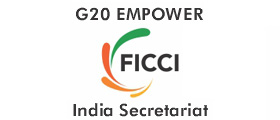The Safe Childbirth Programme, under the National Health Mission, aims to reduce maternal and neo-natal mortalities by encouraging disadvantaged women to give birth in hospitals with the help of a conditional cash transfer in both urban and rural areas. The share of India's institutional deliveries increased to 88.6% in 2019-2021 [National Family Health Survey (NFHS) 5] from 40.8 % in 2005-06 (NFHS-3).
The Prime Minister’s Safe Motherhood Campaign (Pradhan Mantri Surakshit Matritva Abhiyan) provides a fixed-day, free of cost, assured, comprehensive and quality antenatal care (ANC) on the 9th day of every month to all pregnant women in their second/third trimesters of pregnancy. One of the key focus areas of the programme is generating demand through information education & communication (IEC), inter-personal communication (IPC) and behaviour change communication (BCC) activities. Since inception, more than 3.6 crore (36 million) pregnant women have received comprehensive ANC under this programme across all states and union territories. As per the report of NFHS, the percentage of mothers who had at least 4 ANC visits has increased from 51.2 % in 2015-16 to 58.1% in 2019-21, and the percentage of pregnant women with institutional births in public facility has increased from 52.1 % in 2015-16 to 61.9% in 2019-21
A Stipend Programme for New Mothers through Direct Benefit Transfer (Pradhan Mantri Matru Vandana Yojana) provides women who have freshly given birth a cash incentive as partial compensation for wage loss after giving birth. The aim of the programme is to encourage women to rest adequately after the delivery of their first child. The programme also provides additional cash incentives for the second child if it is a girl. A total of INR 12689.27 crore (USD 1.55 billion approx.) has been transferred by the Government of India to 3.02 crore (30.2 million) women beneficiaries.
Empowered Childcare and Nutrition Programme (The Saksham Anganwadi & POSHAN 2.0) focuses on maternal nutrition, infant and young child feeding norms, treatment of moderately acute malnourished (MAM)/severely acute malnourished (SAM) and promotes wellness through ayurveda, unani, siddha, and homoeopathy (AYUSH). 9.84 crore (980 million) children & women from anganwadis or crèches in schools and other government infrastructures in urban areas have benefitted through the scheme. This scheme has improved digital infrastructure to bring greater transparency to nutrition delivery support systems throughout the country with the POSHAN (nutrition) tracker covering 1.7 crore (17 million) pregnant women and lactating mothers.
The Anaemia-free India Programme (Anaemia Mukt Bharat Programme) was launched in 2018 with an aim to reduce the prevalence of anaemia in six population groups - children, adolescent girls and boys, pregnant women, lactating women and women of reproductive age, following a life-cycle approach. Under the programme, the government provided prophylactic iron and folic acid supplementation, deworming, intensified year-round BCC campaign and delayed cord clamping, testing for anaemia using digital methods and point of care treatment, addressed non-nutritional causes of anaemia in endemic pockets with special focus on malaria, hemoglobinopathies and fluorosis etc., to tackle anaemia. 3.9 crore (39 million) pregnant & lactating mothers and 6.2 crore (62 million) children have received iron and folic acid tablets in 2020 and 2021 among other benefits.
National Health Protection Scheme (Ayushman Bharat), another flagship programme of the Indian government, addresses the healthcare system (covering prevention, promotion and ambulatory care) at the primary, secondary and tertiary level by providing free of cost treatment to over 500 million citizens of India, including women. Of the 173 million Ayushman (health) cards that have been handed out, 49.3% are held by women. Also, 8.27 crore (82.7 million) women have been scanned for breast cancer & 5.66 crore (56.6 million) women for cervical cancer. These screenings have been conducted at the 1.54 Lakh (154 thousand) operational AB-Health Wellness Centers across the country. 1.2 crore (120 million) women have used the AB- Jan Arogya Yojana and received authorised admission in hospitals.
The Pradhan Mantri Sahaj Bijli Har Ghar Yojana or ‘Saubhagya’ has supported women to save time. This initiative has immensely helped women in not only improving their health but also in enhancing productive hours for other economic activities and education that was earlier compromised.
The Safe Motherhood Intervention scheme (Janani Suraksha Yojana) promotes institutional delivery among pregnant women especially with weak socio-economic status i.e., women from Scheduled Castes, Scheduled Tribes and BPL households. It provides a conditional cash transfer to mothers post-delivery in both urban and rural areas. The objective is to reduce maternal and neonatal mortality. The share of India's institutional deliveries increased to 88.6% in 2019-2021 (National Family Health Survey 5 (NFHS-5) from 40.8 % in 2005-06 (NFHS 3).
The Clean India Programme (Swachh Bharat Mission) was launched in 2014 with an aim to achieve universal sanitation coverage and make the rural areas of the country Open Defecation Free (ODF) by 2019. Under the mission, all villages, gram panchayats (village councils), districts, states and union territories in India declared themselves "open-defecation free" (ODF) in 2019, by constructing over 10.9 crores (109 million) toilets in rural India. Having a toilet in the home enhances girls' and women's quality of life, menstrual hygiene management, minimises disease transmission, and ensures protection from harassment or sexual assault by men. This has had a significant influence on their health, safety, and self-respect.

